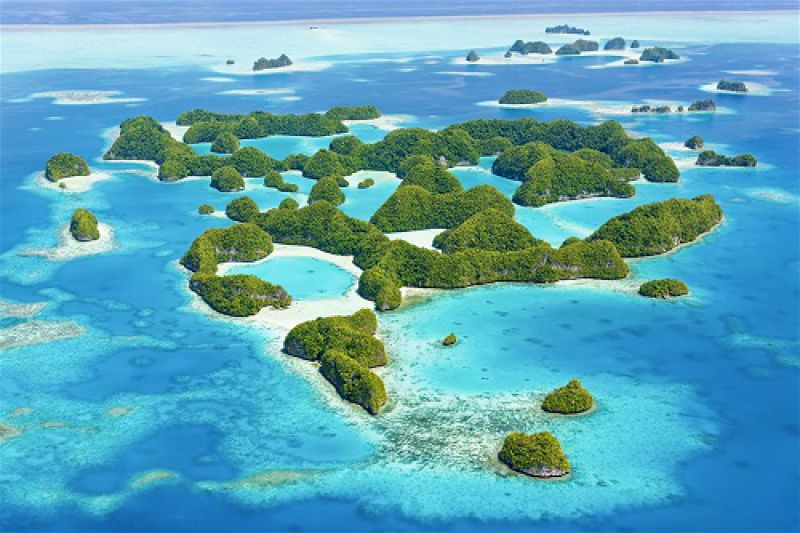OVERVIEW OF PALAU
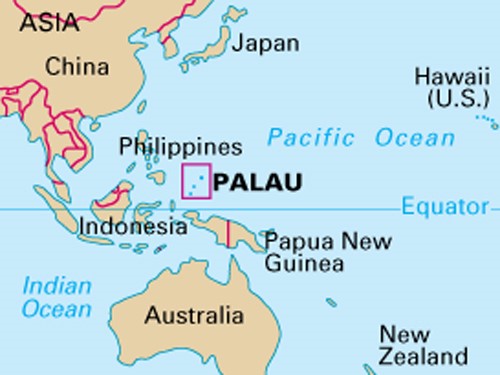
1. INTRODUCE
ಥ The island nation of Palau is an archipelago consisting of many large and small islands, but people are concentrated on only 9 main islands and mainly in Koror.
ಥ Palau: full name is the Republic of Palau, is an island country in the Western Pacific Ocean. The country consists of nearly 250 islands that form the western island chain of the Caroline Islands in Micronesia
ಥ Area: 466 square kilometers (180 sq mi).
ಥ The most populous island is Koror.
ಥ Currency: US Dollar
ಥ Capital: Ngerulmud is located on Babeldaob Island, in the state of Melekeok.
ಥ Palau shares maritime borders with Indonesia, the Philippines, and the Federated States of Micronesia.
ಥ Ethnicity: The Palauans make up a large proportion of the population which is the result of the mixing of 3 ethnic groups Micronesia, Melanesia, and Austronesian
ಥ Official languages: Palauan and English
ಥ Administration: Palau is divided into 16 cantons (called municipalities until 1984).
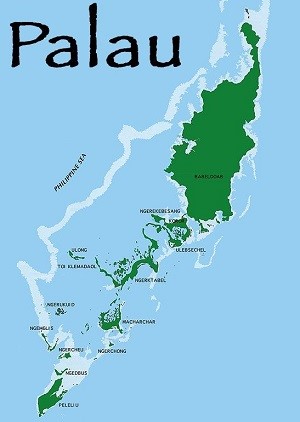
ENSIGN:
The flag of the Republic of Palau has a blue background and a yellow circle slightly slanted towards the flagpole.
The golden circle is a moon symbol of great significance in Palauan culture. The people of Palau believe that all their farming, forestry, fishing and livestock activities are inseparable from the moon.
Traditionally, the full moon is considered the best time for fishing, farming and other activities. It is considered a symbol that gives local people a feeling of warmth, peace, love and solidarity. The blue background is said to be a symbol of the Pacific Ocean.
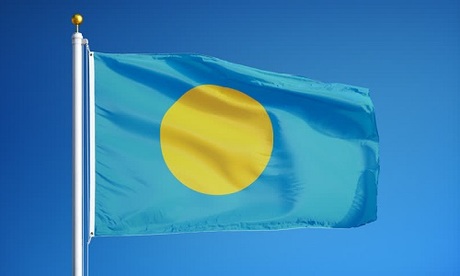
2.
The President of Palau is the head of state and also the head of government. Executive power is exercised by the government, while legislative power is vested in the government and the Palau Parliament. Palau adopted the constitution in 1981.
The governments of the United States and Palau negotiated a treaty of free association in 1986. Under the treaty, the US military was granted access to the islands for 50 years.
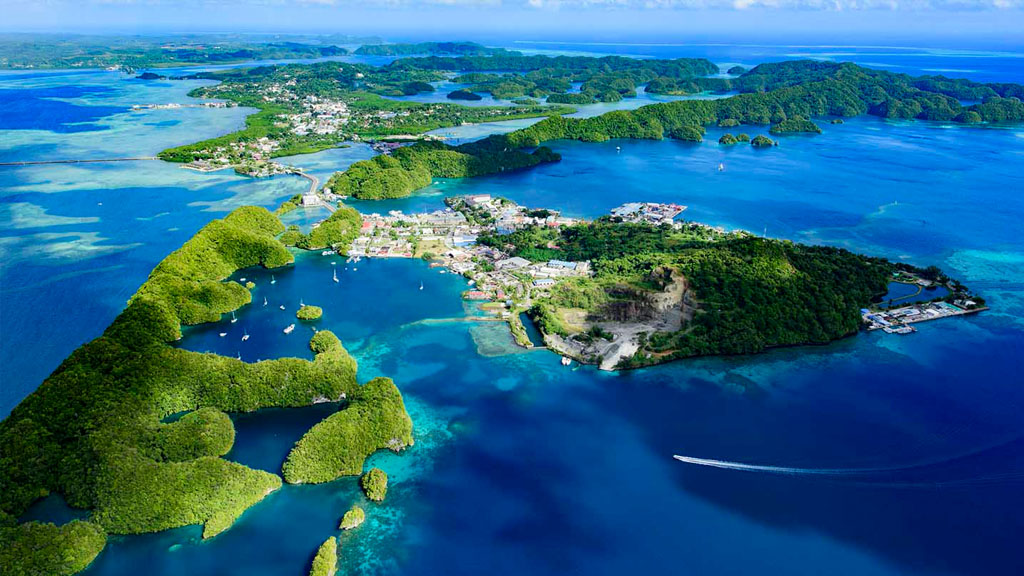
3. GEOGRAPHY
Palau belongs to the Micronesian archipelago, in the Western Pacific Ocean, the westernmost of the archipelago, including 326 large and small atolls and volcanoes, of which Babeldaob is the main island.
The most populous islands are Angaur, Babeldaob, Koror, and Peleliu. About two-thirds of Palau's population lives in the state of Koror.
Palau has a year-round tropical climate with an average annual temperature of 28°C. Rainfall is heavy throughout the year, averaging 3,800mm per year. Average humidity throughout the year is 82%, and although rain falls more frequently between July and October, there is still plenty of sunshine. Hurricanes are rare, as Palau lies outside the Pacific hurricane belt.
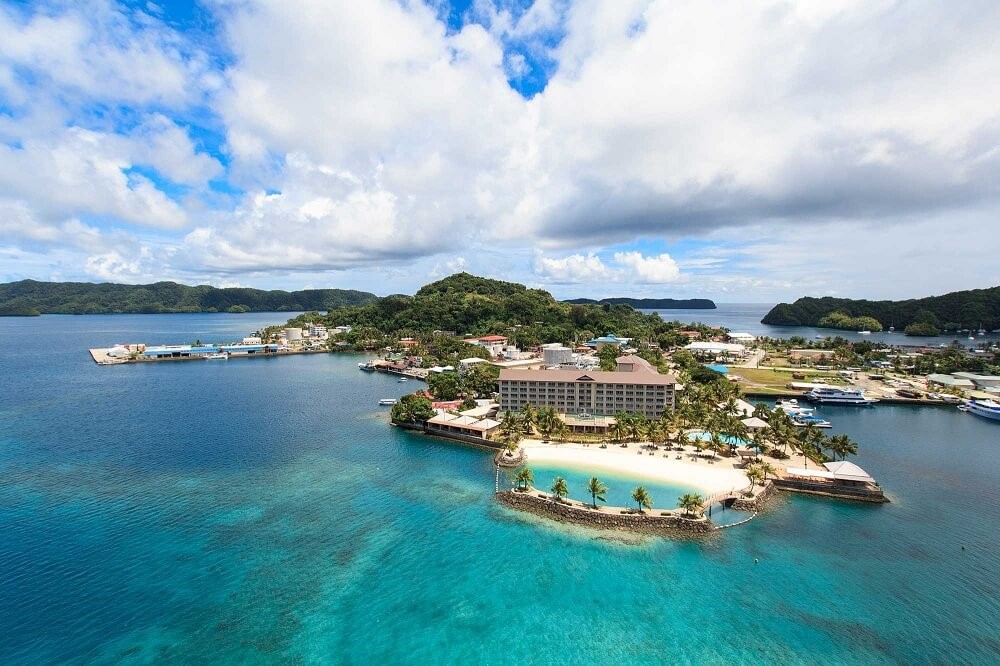
4. ECONOMY
Palau's economy consists mainly of tourism, subsistence agriculture, and fishing. Tourism focuses on scuba diving and snorkeling in a rich marine environment, including visits to coral walls and World War II shipwrecks off the coast of Palau. The government is a major employer of the national workforce, and Palau's economic activities rely heavily on financial support from the United States.
The nature of Pa lau still has many wild features mixed between natural beauty and human creativity. The year-round cool climate is a favorable condition for the fast-growing tourism industry, the spearhead is sea tourism.
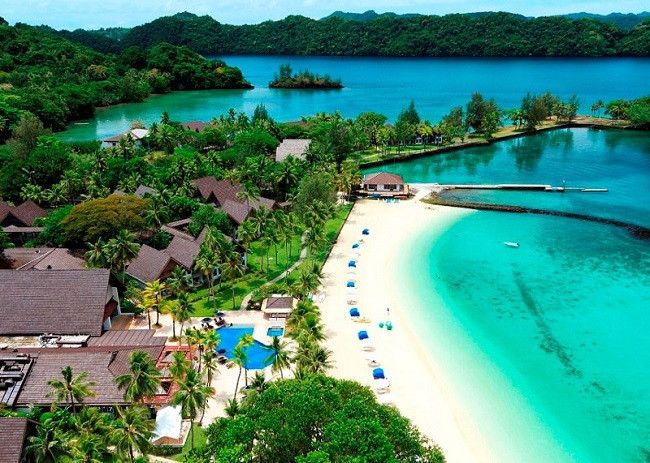
Sea travel


